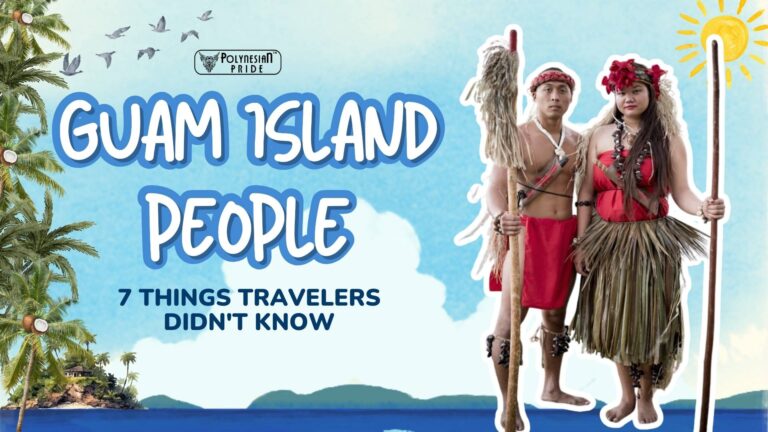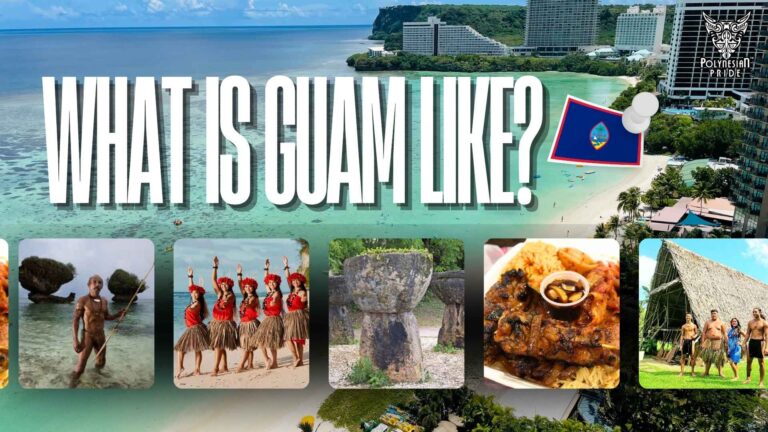Discover the Fascinating History of Vanuatu: A Timeless Journey

Introduction
The history of Vanuatu is a captivating journey through time, revealing the rich tapestry of cultures, traditions, and events that have shaped this enchanting archipelago. Nestled in the South Pacific, the history of Vanuatu spans ancient Melanesian civilizations, European exploration, and modern independence. Each era has left an indelible mark on the islands, contributing to today’s diverse and vibrant culture.
Let’s embark on a journey through time to explore the remarkable history of Vanuatu.
Early history of Vanuatu Island
Archaeological findings suggest that around 1300 BCE, the islands in northern Vanuatu were inhabited by individuals belonging to the Lapita culture from the Melanesian islands situated to the west. Following this, there were subsequent influxes of migrants, including people of Polynesian descent who settled on the southern islands of Aniwa and Futuna (distinct from Futuna Island in the French overseas collectivity of Wallis and Futuna).
Approximately by 1200 BCE, a highly hierarchical society emerged in central Vanuatu with the arrival of the renowned chief Roy Mata (or Roymata), as per tradition, from the south. His passing was commemorated with an intricate ceremony involving the interment of a man and a woman chosen from each of the clans under his authority.
Vanuatu in the colonial era
The Vanuatu islands were first encountered by Europeans in 1606, when the Portuguese explorer Pedro Fernandes de Queirós, sailing for Spain, landed on the largest island and named it La Austrialia del Espiritu Santo. He thought he had reached Terra Australis or Australia. The Spanish briefly settled at Big Bay on the island’s north side. The name Espiritu Santo is still used today. Europeans did not come back until 1768 when Louis Antoine de Bougainville visited and called the islands the Great Cyclades. In 1774, Captain Cook renamed them the New Hebrides, a name that stuck until the islands gained independence.

In 1825, Peter Dillon, a trader, found sandalwood on Erromango Island, sparking a frenzy that lasted until 1830, when Polynesian immigrants clashed with native Melanesians. It was not until the 1860s that significant cultural shifts began to unfold, as numerous ni-Vanuatu individuals, formerly enslaved on plantations in Fiji, New Caledonia, and Queensland, Australia, started returning to their homelands. Many of these individuals went on to establish new avenues of political power through the Protestant missions, predominantly the Presbyterian missions, or by engaging in successful competition with the European traders and plantation owners within the archipelago.
The British and French authorities instated a basic form of political control via a Joint Naval Commission in 1887 to safeguard the interests of the primarily British missionaries and French planters. This system was subsequently replaced in 1906 by an Anglo-French co-governance known as “a condominium”, wherein resident commissioners in Port Vila oversaw their respective nationals while jointly governing the Indigenous population.
Despite this administrative restructuring, most ni-Vanuatu maintained their primary interactions with missionaries and planters. During World War II, the New Hebrides became a crucial Allied military base, where the presence of affluent African American soldiers spurred the evolution of the Jon (or John) Frum cargo cult on Tanna into a significant anti-European political force.
Decolonization in Vanuatu
The final push for independence was mainly driven by the issue of land ownership that emerged in the 1960s. Vanuatu People’s traditions held land for future generations, while Europeans saw it as property, owning around 30% of the land, mainly used for coconut farming. When more land was cleared, protests erupted in Santo and Malekula by Jimmy Stevens and his Nagriamel movement. In the 1960s, France opposed Britain’s wish to decolonize the New Hebrides, fearing it would spark independence movements in their mineral-rich colony, French New Caledonia.
The final push for independence was mainly driven by the issue of land ownership that emerged in the 1960s. Vanuatu People’s traditions held land for future generations, while Europeans saw it as property, owning around 30% of the land, mainly used for coconut farming. When more land was cleared, protests erupted in Santo and Malekula by Jimmy Stevens and his Nagriamel movement. In the 1960s, France opposed Britain’s wish to decolonize the New Hebrides, fearing it would spark independence movements in their mineral-rich colony, French New Caledonia.

The first political party, initially named the New Hebrides National Party, was formed in the early 1970s with Walter Lini, later prime minister, among its founders. Renamed the Vanua’aku Party in 1974, it advocated for independence. The New Hebrides Representative Assembly was set up in 1975 but was disbanded in 1977 because of calls for instant independence and the dismissal of government officials.
In 1979, foreign landowners were compensated by their governments, and a date for complete independence was set, causing dissatisfaction in France. Rebellions in Tanna and Espiritu Santo revealed France’s involvement in wanting Espiritu Santo as a separate colony, with Philippe Allonneau even claiming to be King of Espiritu Santo, recognized by tribal chiefs.
Coconut War
Starting in June 1980, Jimmy Stevens, leader of the Nagriamel movement, initiated a rebellion against colonial authorities and the independence plans, lasting around 12 weeks. The rebels blocked Santo-Pekoa International Airport, destroyed two bridges, and declared Espiritu Santo Island’s independence as the State of Vemerana. Stevens had backing from French-speaking landowners and the Phoenix Foundation, an American organization supporting a tax haven in the New Hebrides.
On June 8, 1980, the New Hebrides government requested British and French troops to quell the uprising in Espiritu Santo. France denied the UK’s troop deployment, and French soldiers on the island remained inactive. Prime Minister-elect Walter Lini sought Papua New Guinea‘s assistance as Independence Day approached. Papua New Guinean soldiers arrived in Espiritu Santo, leading to the conflict being dubbed the Coconut War by the foreign media.
Despite being brief and unconventional, the war saw little resistance from the residents of Espiritu Santo towards the Papua New Guinean soldiers. Stevens’ supporters were armed with rudimentary weapons like bows, arrows, rocks, and slings. The conflict ended abruptly when Papua New Guinean soldiers fired at a vehicle carrying Stevens’ son in late August 1980, resulting in his death. Following this incident, Stevens surrendered, claiming he never intended harm to anyone.
During Stevens’ trial, it was revealed that the Phoenix Foundation had supported the Nagriamel movement, and the French government had covertly aided Stevens. Stevens received a 14-year prison sentence and remained incarcerated until 1991.
The Republic of Vanuatu
Independence for the New Hebrides was decided upon during a conference in Paris in 1977, with representatives from Britain, France, and the New Hebrides present. Elections took place, and a constitution was created in 1979. Despite an unsuccessful effort in the mid-1980s by Jimmy Stevens of the Na-Griamel Party to make the island of Espiritu Santo independent, the New Hebrides gained independence as the Republic of Vanuatu on July 30, 1980, within the Commonwealth.

Shortly after, a defense agreement was made with Papua New Guinea to replace the British and French military presence. In 1982, Vanuatu Island claimed the uninhabited islands of Matthew and Hunter to expand its exclusive economic zone, leading to a dispute with France that remained unresolved into the early 21st century. The Vanua’aku Pati (VP), led by Walter Lini, formed the first parliamentary majority, with Lini serving as prime minister.
Throughout the 1980s, the VP maintained narrow majorities under Lini’s leadership. The government under Lini pursued a nonaligned foreign policy, establishing relations with various capitalist nations and the Soviet Union, China, Libya, and Cuba. Lini faced opposition to his control, especially after a stroke in 1987. A group from his party split to create a new party (the Melanesian Progressive Party, MPP). President Ati George Sokomanu tried to remove Lini but failed. Lini started firing VP members he didn’t trust.
In mid-1991, Lini was replaced as party leader and prime minister by Donald Kalpokas following votes of no confidence. For the December 1991 general election, Lini and his supporters formed the National United Party (NUP). They formed a coalition government with the former opposition, the Union of Moderate Parties (UMP), under Prime Minister Maxime Carlot Korman.
Carlot Korman held onto his position during several coalition governments until the 1995 general election. After that, there were six years of unstable parliamentary coalitions with six different prime ministers, including Carlot Korman and Kalpokas, serving additional terms and two short terms for Rialuth Serge Vohor of the UMP. Some administrations, like Carlot Korman’s and Barak Sope’s from the Melanesian Progressive Party in 1999–2001, fell apart due to allegations of corruption and criminal activities.

In 1997, despite the political unrest, the government implemented a reform program funded by the Asian Development Bank. The main goals were to revamp the civil service and other public institutions, enhance infrastructure, and attract more foreign investment. Although there were frequent changes in government during the late 20th and early 21st centuries, showing somewhat fragile stability, overall, Vanuatu was generally seen as one of the region’s more peaceful and prosperous countries.
Explore more: Explore the Rich Vanuatu Culture
Conclusion
In conclusion, the history of Vanuatu is a rich tapestry woven with resilience, diversity, and cultural depth. From its ancient Melanesian roots to its modern-day achievements, the history of Vanuatu offers a profound understanding of the island nation’s journey through time. As you delve into the history of Vanuatu, you’ll uncover stories of bravery, adaptation, and enduring traditions that continue to shape its identity. Embrace the captivating history of Vanuatu and let it inspire your appreciation for this extraordinary archipelago, where every era has left its unique imprint.
Frequently Asked Questions (FAQs)
Who first discovered Vanuatu?
Pedro Fernandez de Quiros
Vanuatu, previously referred to as the New Hebrides during the period of condominium rule, has had human settlement for more than 4000 years. The European discovery of the islands occurred in May 1606 by Spanish explorer Captain Pedro Fernandez de Quiros.
Where do Vanuatu people originate from?
The researchers discovered that contrary to the assumption of migration from adjacent regions such as Australia, Papua New Guinea, or the Solomon Islands – where human presence has been established for 40,000 to 50,000 years – the initial settlers of Vanuatu originated from a much more distant northern location, specifically Taiwan and the northern Philippines.
Who is Vanuatu owned by?
kastom owners
On the 30th of July, 1980, in the short-lived Coconut War, the Republic of Vanuatu came into existence. Following its independence, the ownership of land has been restricted to kastom owners and the government. Other islanders who are not kastom owners and foreigners are permitted to lease land, but the duration is limited to the productive lifespan of a coconut palm, which is 75 years.
What is a historical fact about Vanuatu?
The islands started to be inhabited by Europeans towards the end of the 1700s, following the visit of British explorer James Cook during his second expedition. He was the one who named these islands the New Hebrides.

I am a cultural historian and editor with over 10 years of research into pre-contact Polynesian history, the Lapita migration, and oral traditions. Share the excitement of my latest publications.
My contact:
Email: [email protected]
Tel: +64 21 456 7890






